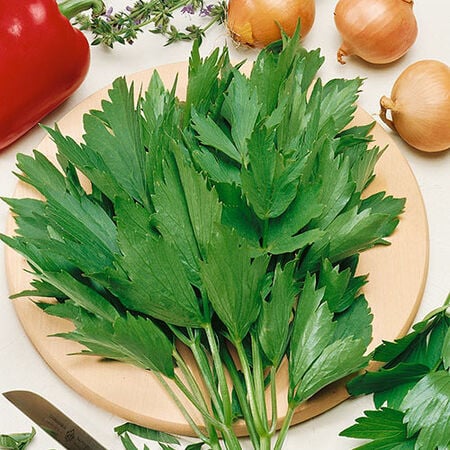Common, Lovage Seeds
Key Attributes
Key Attributes
Product Details
Weight
0.013Plant Height
3-5'Botanical Name
Levisticum officinaleSeed Type
SeedSeeds Per Gram
356Seeds Per Pound
161,600Packet
200 SeedsSow Depth
1/2"Seeds Per Ounce
10,100Breed
Open-pollinatedSun
Full SunLife Cycle
PerennialSow Method
Direct SowCategories
HerbGermination
11,12,13,14,8,9,10Days To Maturity (# Days)
90Components
Growing Instructions
![]() Learning Download: How to Grow Lovage
Learning Download: How to Grow Lovage
Although it resembles celery, lovage is actually in the carrot family. It has a high salt content, and its stalks and stems are best when used in carbohydrate-rich dishes like pasta and potatoes.
Before Planting: Direct sow seeds five to six weeks before the last frost date.
Planting: Sow the seeds on the surface of the soil and dust a light covering of sand over.
Watering: Water regularly.
Fertilizer: Fertilize regularly with liquid fertilizer.
Days to Maturity: Lovage will begin to bloom in the early summer and continue blooming through late summer.
Harvesting: All parts of the lovage herb are harvestable. Its leaves can be added to salads, roots can be dug up after the season is over to be used as a vegetable and stems can replace celery.
Tips: Lovage is a good companion plant for potatoes and other root vegetables.
Shipping Schedule
Our Seed Promise
 "Agriculture and seeds" provide the basis upon which our lives depend. We must protect this foundation as a safe and genetically stable source for future generations. For the benefit of all farmers, gardeners and consumers who want an alternative, we pledge that we do not knowingly buy or sell genetically engineered seeds or plants.
"Agriculture and seeds" provide the basis upon which our lives depend. We must protect this foundation as a safe and genetically stable source for future generations. For the benefit of all farmers, gardeners and consumers who want an alternative, we pledge that we do not knowingly buy or sell genetically engineered seeds or plants.
The mechanical transfer of genetic material outside of natural reproductive methods and between genera, families or kingdoms, poses great biological risks as well as economic, political, and cultural threats. We feel that genetically engineered varieties have been insufficiently tested prior to public release. More research and testing is necessary to further assess the potential risks of genetically engineered seeds. Further, we wish to support agricultural progress that leads to healthier soils, to genetically diverse agricultural ecosystems, and ultimately to healthy people and communities.
To learn more about the "Safe Seed Pledge" please visit www.councilforresponsiblegenetics.org.

